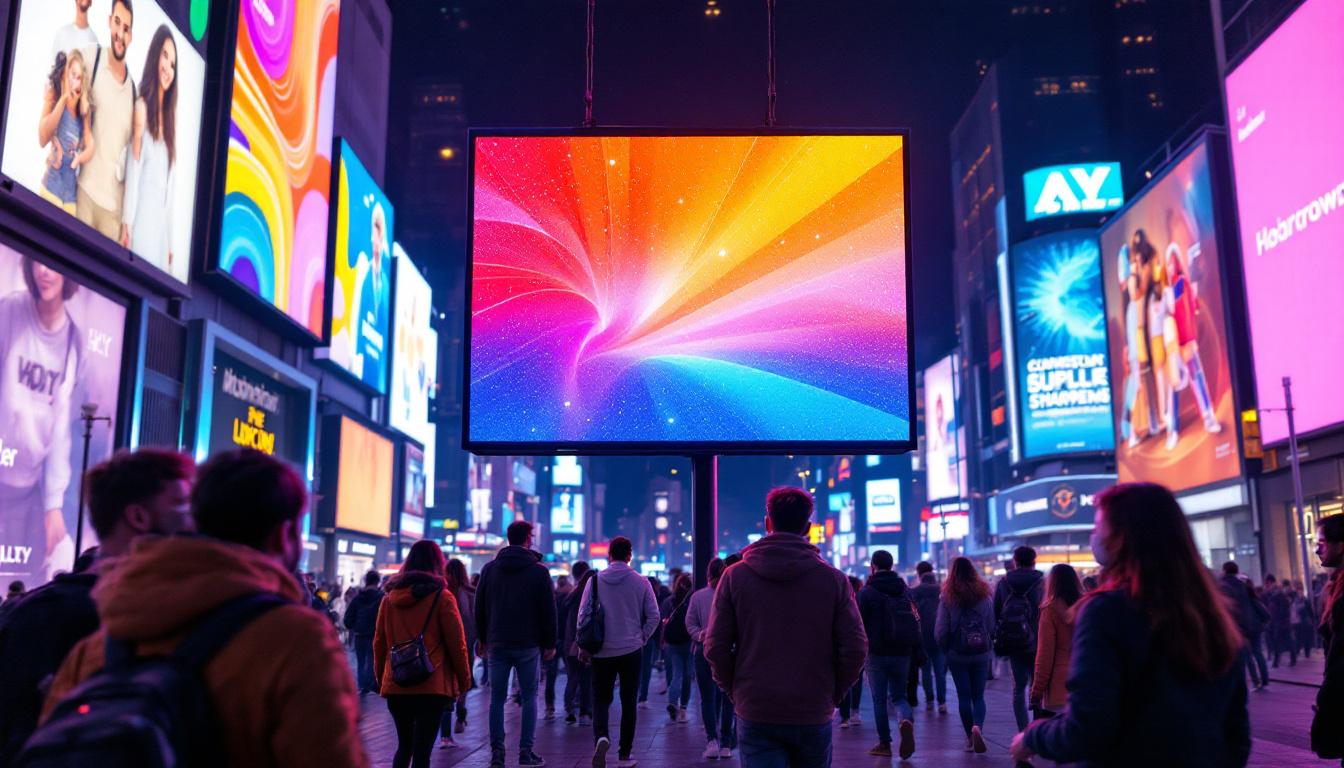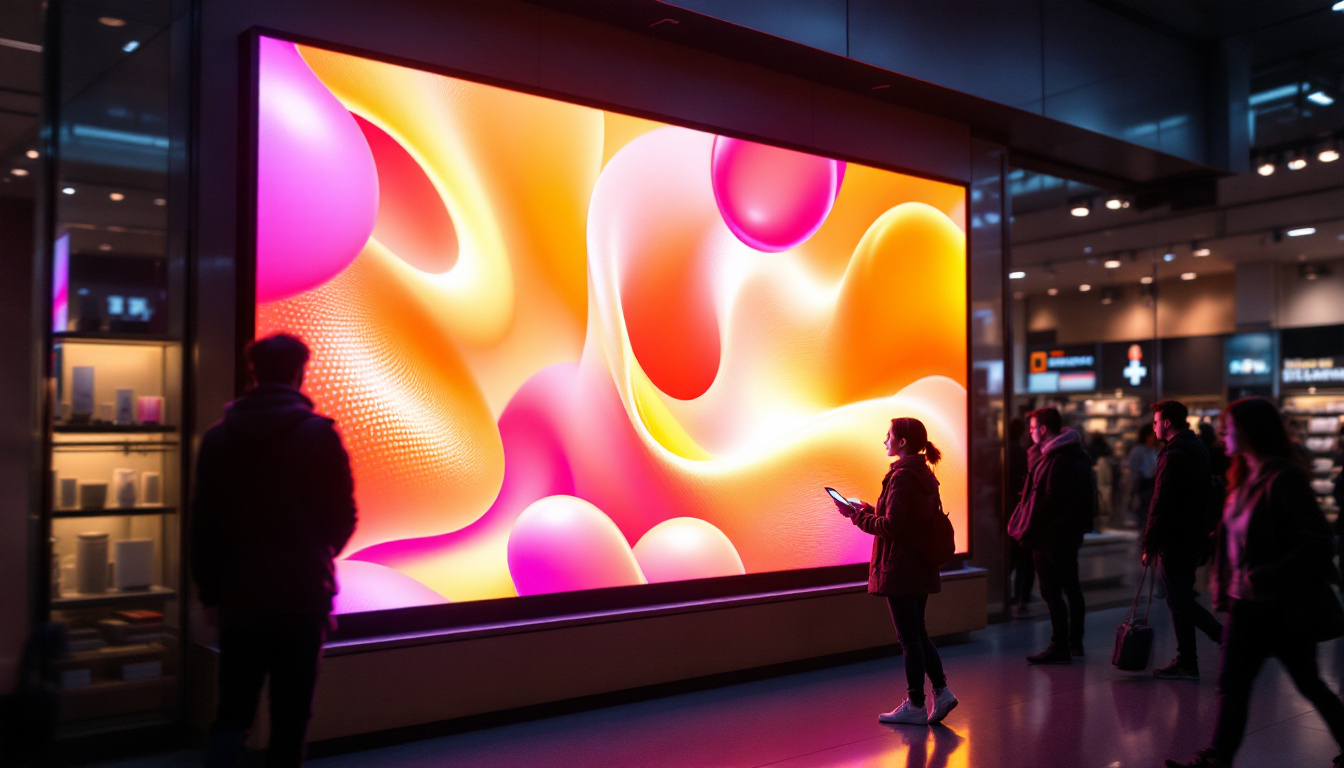In the fast-paced world of information technology and digital communication, acronyms often become part of everyday language. One such acronym that frequently appears in airports, train stations, and large event venues is FIDS, which is closely associated with LED displays. Understanding what FIDS stands for and how LED display technology integrates with it is essential for professionals in information systems, transportation management, and digital signage industries. This article delves into the full form of FIDS, explores the role of LED displays in FIDS, and explains why this combination is critical in modern information dissemination.
What Does FIDS Stand For?
The acronym FIDS stands for Flight Information Display System. It is a specialized information system designed to provide real-time updates about flight schedules, gate information, delays, cancellations, and other relevant data to passengers and airport staff. While the term originated in aviation, the concept has expanded to other transportation hubs such as train stations and bus terminals, where it may be referred to as Passenger Information Display System (PIDS).
FIDS is a critical component of airport operations, ensuring smooth passenger flow and timely communication. The system consolidates data from various sources, including airline databases, air traffic control, and airport management systems, to present accurate and up-to-date flight information. The technology behind FIDS has evolved significantly over the years, incorporating advanced software and hardware solutions that allow for seamless integration and real-time updates. This evolution has led to the implementation of digital displays, mobile notifications, and even interactive kiosks that enhance the accessibility of flight information.
Why Is FIDS Important?
In an environment where thousands of passengers navigate complex terminals daily, clear and timely information is paramount. FIDS helps reduce passenger anxiety by providing transparent updates and assists airport staff in managing boarding processes efficiently. Moreover, it enhances the overall passenger experience by minimizing confusion and delays. The system not only informs passengers of their flight status but also plays a vital role in crisis management during unforeseen circumstances, such as severe weather or technical issues. By quickly disseminating information about changes or emergencies, FIDS helps maintain order and safety within the airport, allowing both passengers and staff to respond appropriately to evolving situations.
Furthermore, FIDS systems are increasingly being integrated with mobile applications, allowing travelers to receive updates directly on their smartphones. This integration represents a significant shift towards personalized travel experiences, where passengers can monitor their flights from anywhere in the airport or even while on the go. Such advancements not only improve the efficiency of airport operations but also cater to the growing demand for real-time information in our fast-paced world. As technology continues to advance, the role of FIDS will likely expand further, incorporating features such as predictive analytics to anticipate delays and suggest alternative travel options, thereby enhancing the overall travel experience.
The Role of LED Displays in FIDS
LED (Light Emitting Diode) displays have become the preferred medium for presenting FIDS information due to their brightness, clarity, energy efficiency, and durability. Unlike traditional LCD or plasma screens, LED displays offer superior visibility even in brightly lit environments, making them ideal for busy terminals with varying lighting conditions. This capability is particularly crucial in airports where passengers often need to quickly locate their flight information amidst a sea of activity and distractions.
Modern airports and transportation hubs rely on large-scale LED display boards strategically placed in terminals, lounges, and concourses to ensure passengers can easily access flight information from multiple vantage points. The dynamic nature of LED technology allows for not just static displays but also animated graphics and scrolling text, enhancing the overall communication experience. This flexibility enables airports to provide not only essential flight data but also promotional content and real-time updates about services, enhancing passenger engagement and satisfaction.
Advantages of LED Displays for FIDS
- High Visibility: LED displays provide vibrant colors and high contrast, ensuring information is readable from long distances.
- Energy Efficiency: LEDs consume less power compared to other display technologies, reducing operational costs for airports.
- Durability: LED panels are resistant to damage and have a longer lifespan, making them suitable for continuous operation in busy environments.
- Scalability: LED displays can be configured in various sizes and shapes, allowing customization to fit different terminal layouts.
- Real-Time Updates: Integration with FIDS software enables instant updating of flight information, minimizing errors and delays.
Moreover, the installation of LED displays can significantly enhance the aesthetic appeal of an airport. With sleek designs and the ability to create eye-catching visuals, these displays can transform a terminal into a modern and inviting space. Airports are increasingly leveraging this technology not just for functional purposes, but also to create immersive experiences that reflect the culture and identity of the region they serve. For instance, vibrant LED screens can showcase local attractions, art, and events, making the airport not just a transit point but a gateway to the destination itself.
In addition to their visual advantages, LED displays also contribute to improved operational efficiency. By utilizing advanced analytics and data integration, airports can monitor foot traffic and adjust display content in real-time based on passenger flow. This capability allows for targeted messaging, such as directing travelers to less crowded areas or promoting specific services during peak times. As technology continues to evolve, the role of LED displays in FIDS is likely to expand, incorporating features such as augmented reality and interactive elements that further enhance the passenger experience.
How FIDS and LED Displays Work Together
The integration of FIDS software with LED display hardware creates a seamless system that delivers real-time flight information to passengers. This process involves several key components:
Data Collection and Processing
Flight data is collected from multiple sources, including airline databases, air traffic control systems, and airport operations centers. The FIDS software processes this data, filtering and organizing it according to the terminal’s display requirements.
Content Management System (CMS)
A CMS manages the content displayed on LED screens. It allows operators to schedule, update, and customize information such as flight numbers, departure times, gate changes, and delay notifications. The CMS ensures that the data is presented clearly and consistently across all display units.
Display Hardware
The LED panels receive data from the CMS and render the information visually. These panels are designed to handle high-resolution graphics and text, ensuring legibility and aesthetic appeal. Advanced LED displays also support animations and dynamic content to attract passenger attention effectively.
Network Infrastructure
A robust network infrastructure connects the FIDS software, CMS, and LED hardware. This network ensures low latency and high reliability, which are crucial for timely updates in fast-changing environments like airports.
Applications Beyond Airports
While FIDS is primarily associated with airports, the principles behind it and the use of LED displays extend to other transportation and public information systems.
Railway and Bus Stations
Passenger Information Display Systems (PIDS) in train and bus stations operate similarly to FIDS, providing real-time schedules, platform information, and service alerts. LED displays in these venues improve passenger experience by offering clear and accessible information.
Event Venues and Public Spaces
Large-scale LED displays are also used in stadiums, convention centers, and city squares to broadcast event schedules, emergency announcements, and advertisements. The flexibility and visibility of LED technology make it ideal for these dynamic environments.
Recent Trends and Innovations in FIDS and LED Displays
The evolution of FIDS and LED display technology continues to advance, driven by the demand for better passenger experiences and operational efficiency.
Integration with Mobile and Web Platforms
Modern FIDS solutions often integrate with mobile apps and web portals, allowing passengers to receive personalized flight updates on their devices. This multi-channel approach complements LED displays and ensures passengers stay informed even when away from display boards.
Artificial Intelligence and Predictive Analytics
AI-powered FIDS can analyze historical data and current conditions to predict delays and suggest optimal gate assignments. This proactive approach helps airports manage resources more effectively and improve passenger satisfaction.
High-Resolution and Flexible LED Displays
Advancements in LED technology have led to ultra-high-resolution displays and flexible panels that can conform to unique architectural designs. These innovations enable airports to create visually stunning information hubs that enhance the terminal environment.
Challenges and Considerations
Despite the benefits, implementing FIDS with LED displays involves several challenges that airports and transportation authorities must address.
Cost and Maintenance
Initial installation of large LED display systems can be costly. Ongoing maintenance and software updates also require dedicated resources to ensure system reliability.
Data Accuracy and Security
FIDS depends on accurate and secure data feeds. Any disruption or cyberattack can lead to misinformation, causing passenger confusion and operational issues. Robust cybersecurity measures are essential.
Accessibility and Inclusivity
Designing FIDS and LED displays to accommodate passengers with disabilities is crucial. Features such as audio announcements, high-contrast text, and multilingual support enhance accessibility.
Conclusion
Understanding the full form of FIDS—Flight Information Display System—and its integration with LED display technology reveals the complexity and importance of modern information systems in transportation hubs. LED displays serve as the visual backbone of FIDS, delivering critical real-time information that enhances passenger experience and operational efficiency. As technology evolves, FIDS and LED displays will continue to innovate, incorporating AI, mobile integration, and advanced display technologies to meet the growing demands of global travel and public information dissemination.
For airports, railway stations, and other public venues, investing in robust FIDS with state-of-the-art LED displays is not just a matter of convenience but a strategic imperative to ensure smooth operations and customer satisfaction in an increasingly connected world.
Discover LumenMatrix LED Display Innovations
As you consider the pivotal role of FIDS in enhancing passenger experiences and operational efficiency, imagine the potential when paired with the superior LED display technology from LumenMatrix. Our range of solutions, from Indoor and Outdoor LED Wall Displays to specialized options like Vehicle, Sports, and Floor LED Displays, are designed to meet the diverse needs of transportation hubs and public venues. Embrace the future of visual communication with LumenMatrix’s Custom, All-in-One, and Transparent LED Displays, and let us help you create immersive environments that captivate and inform. Check out LumenMatrix LED Display Solutions today and take the first step towards transforming your space into a dynamic, engaging hub of information.































